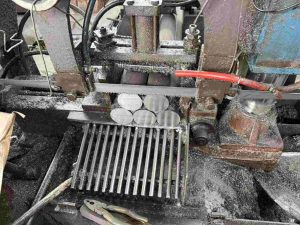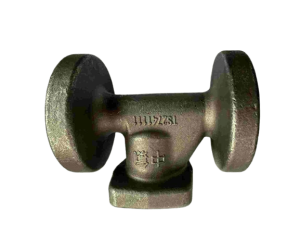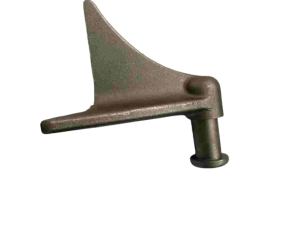carbon steel forged parts
As a manufacturer of carbon steel forged parts, Luoyang Forging provides customers with carbon steel forging services, offering comprehensive die-forging solutions from product design to finished products. Our company is certified under the 9001 system and has over 20 years of extensive forging experience. We also support customized services for forged parts in the automotive industry, oil pipeline industry, power tools, and construction equipment.

What Materials Are Used for Carbon Steel Die Forgings?
There are many materials for carbon steel forgings, and the material grades vary by country.
American Standards (ASTM/SAE/AISI):
ASTM forging materials include ASTM A105 (suitable for forging pipe flanges), ASTM A266, and ASTM A668.Chinese Material Standards: Q235, 45# steel, 5CrMo.
European Standards: 1.0405, 10503.
Japanese Materials: SF540, SWRH62A.
Some of these materials have strong corrosion resistance, while others are wear-resistant. The choice of material depends on the application scenario of the carbon steel part and which material best meets the customer’s requirements.

What Materials Are Used for Carbon Steel Die Forgings?
There are many materials for carbon steel forgings, and the material grades vary by country.
American Standards (ASTM/SAE/AISI):
ASTM forging materials include ASTM A105 (suitable for forging pipe flanges), ASTM A266, and ASTM A668.Chinese Material Standards: Q235, 45# steel, 5CrMo.
European Standards: 1.0405, 10503.
Japanese Materials: SF540, SWRH62A.
Some of these materials have strong corrosion resistance, while others are wear-resistant. The choice of material depends on the application scenario of the carbon steel part and which material best meets the customer’s requirements.

What Is the Specific Process for Carbon Steel Die Forgings?
The specific process for carbon steel die forgings is the same as conventional die forging:
Cutting → Heating → Die Forging → Trimming → Heat Treatment → Surface Treatment → Inspection.
Here, we take ASTM A266 carbon steel forging as an example:
Cutting:
ASTM A266 is cut using a circular saw. Two key factors must be considered:Selecting the appropriate bar size based on the customer’s product dimensions.
Determining the cutting size to facilitate forging based on the product dimensions.
Heating:
Carbon steel forgings are typically heated using medium-frequency induction heating, reaching temperatures of 1100–1250°C. For high-precision forgings, resistance furnaces are used. Both medium and high-carbon steels are generally heated to around 1200–1250°C or 1100–1150°C.Die Forging:
Before forging, the mold is designed based on the drawing. Key considerations include:The customer’s dimensions, especially thickness, to design the mold.
Machining requirements. For strict dimensional and appearance requirements, a double-cavity mold can be used, producing forgings with excellent appearance, no burrs, and no oxide scale.
After mold design, the mold is installed on the forging machine for production.
Process Applicable Scenarios Equipment Characteristics Open-Die Forging Simple-shaped forgings (flanges, connecting rods) Hammer/Friction Press Large flash, low material utilization Closed-Die Forging Precision forgings (gears, bearing rings) Hydraulic Press/Mechanical Press No flash, high dimensional accuracy Multi-Directional Forging Complex hollow parts (valve bodies, tees) Multi-Directional Forging Press Can form complex structures in one step The appropriate forging method is selected based on the drawing requirements.

Heat Treatment and Machining:
Heat treatment further enhances material hardness. For example, ASTM A266 has a hardness of ≤170 HB before heat treatment, which can be significantly improved afterward. Machining includes shot blasting/sandblasting and machine tool processing.
Shot blasting/sandblasting improves surface smoothness and brightness.
Machine tool processing delivers the final product to the customer.
